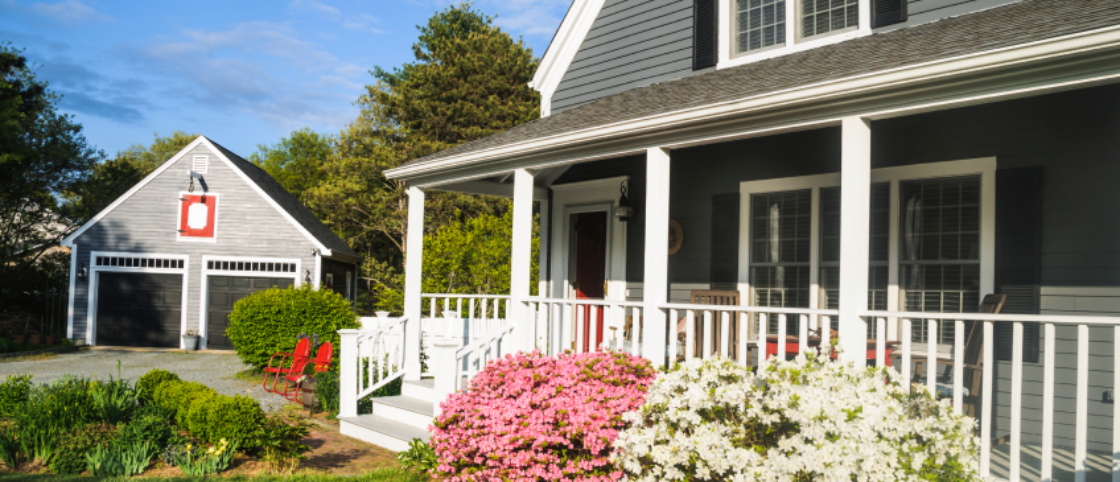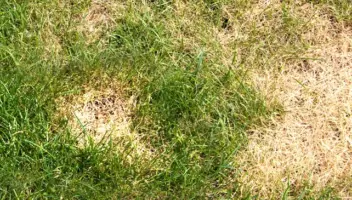How to Avoid Home & Garden Damage

The snow is melting and your gutters are clogging. Your landscaping is floating away, and your basement is damp. As spring grows nearer, it is important to follow a routine checklist to ensure your home is in top shape for the warmer weather. With constant cycles of melting and refreezing, your building materials must face expansion and contraction with the temperature swings. Here are three ways to protect your home and garden, and avoid cleaning up the soggy mess that spring tends to bring.
Protect Your Landscaping: Redirect Water Like A Pro
Chances are your plants, mulch and decorative landscaping fare pretty well under normal amounts of water. Throughout the year you must take up arms against unruly water – after large summer downpours or snow packs melting in late winter and into early spring. When large amounts of water collect, your home upkeep can quickly turn to chaos in the form of a grounds-keeping nightmare.
Even relatively flat flowerbeds and sidewalks can have slight dips that sweep away mulch and topsoil when water oversaturates the ground and must begin to float way until it pools in low spots. You’re not out of luck, however! Fortunately, you can reduce the need for regular maintenance while boosting your curb appeal. To help avoid the damage and disgusting mess, consider buying decorative stone pavers or landscaping timbers to form a retaining wall that forms a border around your sidewalks, entryways, and flower beds. You may also consider buying filler dirt to put in certain lower areas.
Slow the Flow: Prevent Sudden Widespread Melting
It should come as no surprise that snowmelt causes flooding – your home receives the brunt side of weeks of accumulated precipitation all in the course of a few hours or days. While you can’t control Mother Nature or the temperature and precipitation it brings, you’re at full liberty to work with what it gives you. With time on your side, you can reduce the threat of unmanageable flooding.
By finding a way to handle snow as it falls, you are able to deal with it in smaller quantities, ultimately reducing the amount of snow that has to melt all at once around your home. How do you melt snow when it is still cold enough outside to snow in the first place? One of the biggest sources of snow around a house is not actually around it, but on top of it – the roof. Just as your roof collects water and channels it into your gutter system (in much bigger quantities than it is falling), your roof accumulates snow as well. When it is time to melt, the snow comes down in concentrated areas as well.
Fortunately, you can leverage your home’s gutter system to help manage your snowmelt. While it is an effective system designed for the task, you’ll need to first melt the snow and then be sure it does not overload your system. Heating cables are designed for exactly that task. Installed along the perimeter of your roofing system near the gutters/eavestroughs, snow begins to melt to free up your gutter system when sensors detect ice and snow. Not only will you manage your snow as it accumulates, but you’ll also avoid ice damming and other hazards that may damage your roof and attic.
Control The Water: Bypass Problem Areas
Perhaps your gutter system works effectively and channels water away from your roof. What happens next? If you don’t properly redirect the flow of water away from your home, it may rest at the base of your home, causing basement flooding or even foundation damage. At that point, your plants are the last of your worries.
Fortunately, there are a number of ways to carefully move water at your will. One inexpensive, effortless option is to select a downspout splash block/plate. Placing one at the terminal end of your gutter downspout will slow and direct the flow of water from your gutter system, reducing its power while controlling its direction. Another effective and inexpensive option involves installing gutter downspout extensions, which install snugly at the end of your gutter downspout and contain water in long hoses which you can leave above ground or bury. Using gravity to your advantage, expanses of hosing can keep water far from your home and direct it downhill out the other end of your landscaping.
Ultimate Protection for Your Home
Whether you have a carefully manicured lawn and want to protect your landscaping, you are weary of damage to your home, or you just want to walk to your front door without being ankle deep in water, there are a number of ways to mitigate the problems caused by snowmelt. Spring will come, however, and with the good weather you’ll be happy to enjoy your home and all it has to offer.
For the ultimate worry-free protection, consider LeafFilter™ Gutter Guards for your gutters. Keep the water flowing through your gutters no matter the time of year. Reclaim the time you spend cleaning gutters, and enjoy the LeafFilter™ lifetime, transferrable, no-clog warranty. Protect yourself from water damage, from dangerous ladder falls and from unneeded stress. With LeafFilter™ Gutter Protection, you’ll be sure the tips above work to their fullest.


